
ISIS terrorists blow up Arch of Triumph in Palmyra
الثلاثاء, 6 تشرين الأول 2015 الساعة 02:51 | , News

jouhina news
The Islamic State in Iraq and Syria (ISIS) terrorists blew up Sunday a nearly 2,000-year-old arch of Triumph in the besieged ancient city of Palmyra, a UNESCO world Heritage site, in the central Homs province.
The Arch of Triumph was one of the most recognizable sites in Palmyra “Bride of the Desert”, which the ISIS group seized in May, as it sat atop the famed colonnaded streets of the ancient city.
Director General of the Antiquities and Museums Directorate Maamoun Abdul-Karim confirmed in a statement to SANA ISIS’s new aggression, citing local sources in Palmyra city as saying that the ISIS terrorists booby trapped and blew up the Arch of Triumph which was destroyed completely.
This aggressive attack is one of a series of deliberate vandalism acts inflicted by ISIS on ruins and historical sites in Palmyra after it took over it last May, where they destroyed last September three ancient tower tombs that date back to different eras from 44 to 103 A.D, including the Tower of Elahbel, built in 103 AD and regarded as the finest example of this type of building, in addition to the Tower of Iamliku and the Tower of Kitot.
ISIS terrorists also destroyed last August large parts of the ancient Temple of Bel, dating back to 32 AD, and Temple of Baalshamin, while in early July, ISIS destroyed the 1,900-year-old “Lion of Al-Lat” statue in Palmyra.
UNESCO condemns destruction of the Arch of Triumph in Palmyra
The United Nations Educational, Scientific and Cultural Organization (UNESCO) condemned the destruction of the Arch of Triumph in the ancient Syrian city of Palmyra by Islamic State of Iraq and Syria (ISIS), a UNESCO world Heritage site.
“This new destruction shows how terrified by history and culture the extremists are, because understanding the past undermines and delegitimizes the pretexts they use to justify these crimes and exposes them as expressions of pure hatred and ignorance. Palmyra symbolizes everything that extremists abhor, cultural diversity, intercultural dialogue, the encounter of different peoples in this center of trading between Europe and Asia,” UNESCO’s director-general, Irina Bokova said in a statement on Monday.
She said that UNESCO reaffirms its determination to protect all that can be saved by relentlessly fighting against the illicit trafficking of cultural objects, documenting heritage and establishing networks to link the thousands of experts in Syria and abroad working to transmit this heritage, notably with the help of modern technology.
The Arch of Triumph, built by Septimius Severus between 193 and 211 AD, is a symbol of the city, whose image has traveled around the world. A masterpiece of civil architecture and urban planning, the Arch was topped by geometric and floral ornaments. It marked the junction between the immense colonnades more than one kilometer in length and the Temple of Bel, also destroyed this year.
jouhina news
The Islamic State in Iraq and Syria (ISIS) terrorists blew up Sunday a nearly 2,000-year-old arch of Triumph in the besieged ancient city of Palmyra, a UNESCO world Heritage site, in the central Homs province.
The Arch of Triumph was one of the most recognizable sites in Palmyra “Bride of the Desert”, which the ISIS group seized in May, as it sat atop the famed colonnaded streets of the ancient city.
Director General of the Antiquities and Museums Directorate Maamoun Abdul-Karim confirmed in a statement to SANA ISIS’s new aggression, citing local sources in Palmyra city as saying that the ISIS terrorists booby trapped and blew up the Arch of Triumph which was destroyed completely.
This aggressive attack is one of a series of deliberate vandalism acts inflicted by ISIS on ruins and historical sites in Palmyra after it took over it last May, where they destroyed last September three ancient tower tombs that date back to different eras from 44 to 103 A.D, including the Tower of Elahbel, built in 103 AD and regarded as the finest example of this type of building, in addition to the Tower of Iamliku and the Tower of Kitot.
ISIS terrorists also destroyed last August large parts of the ancient Temple of Bel, dating back to 32 AD, and Temple of Baalshamin, while in early July, ISIS destroyed the 1,900-year-old “Lion of Al-Lat” statue in Palmyra.
UNESCO condemns destruction of the Arch of Triumph in Palmyra
The United Nations Educational, Scientific and Cultural Organization (UNESCO) condemned the destruction of the Arch of Triumph in the ancient Syrian city of Palmyra by Islamic State of Iraq and Syria (ISIS), a UNESCO world Heritage site.
“This new destruction shows how terrified by history and culture the extremists are, because understanding the past undermines and delegitimizes the pretexts they use to justify these crimes and exposes them as expressions of pure hatred and ignorance. Palmyra symbolizes everything that extremists abhor, cultural diversity, intercultural dialogue, the encounter of different peoples in this center of trading between Europe and Asia,” UNESCO’s director-general, Irina Bokova said in a statement on Monday.
She said that UNESCO reaffirms its determination to protect all that can be saved by relentlessly fighting against the illicit trafficking of cultural objects, documenting heritage and establishing networks to link the thousands of experts in Syria and abroad working to transmit this heritage, notably with the help of modern technology.
The Arch of Triumph, built by Septimius Severus between 193 and 211 AD, is a symbol of the city, whose image has traveled around the world. A masterpiece of civil architecture and urban planning, the Arch was topped by geometric and floral ornaments. It marked the junction between the immense colonnades more than one kilometer in length and the Temple of Bel, also destroyed this year.
اقرأ المزيد...

 Media delegation visits western countryside of Aleppo
Media delegation visits western countryside of Aleppo  Syrian detainee Majed Farhan al-Shaer free after five and a half year detention in Israeli jails
Syrian detainee Majed Farhan al-Shaer free after five and a half year detention in Israeli jails 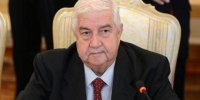 Al-Moallem: Terrorism has spread to the states that have been supporting it for five years
Al-Moallem: Terrorism has spread to the states that have been supporting it for five years  Tripartite meeting on the crisis in Syria held in Geneva
Tripartite meeting on the crisis in Syria held in Geneva  Syrian Army establishes control over four villages near Salma in Lattakia and another in Aleppo
Syrian Army establishes control over four villages near Salma in Lattakia and another in Aleppo  New areas under army control during operation to establish control over Khan al-Assal in Aleppo
New areas under army control during operation to establish control over Khan al-Assal in Aleppo 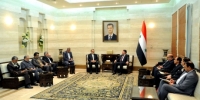 Syria, Iran discuss cooperation in combating drug and human trafficking
Syria, Iran discuss cooperation in combating drug and human trafficking 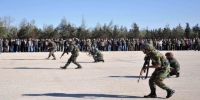 Groups of self-protection squads graduated in Homs and Daraa
Groups of self-protection squads graduated in Homs and Daraa  Foreign Minister al-Moallem visits India
Foreign Minister al-Moallem visits India  DSE Monday session closes at 1218.12 points
DSE Monday session closes at 1218.12 points 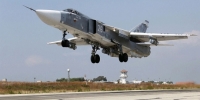 Russian Air Force destroyed around 1,100 terrorist positions in Syria since beginning of 2016
Russian Air Force destroyed around 1,100 terrorist positions in Syria since beginning of 2016 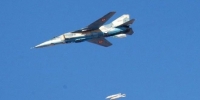 Army establishes control over areas in Lattakia, the Air Force destroys 20 ISIS trucks in Deir Ezzor
Army establishes control over areas in Lattakia, the Air Force destroys 20 ISIS trucks in Deir Ezzor 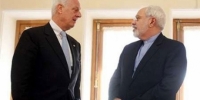 Zarif asserts Iran will not let Saudi actions undermine resolving crisis in Syria
Zarif asserts Iran will not let Saudi actions undermine resolving crisis in Syria  The Syrian starving little “Mona Lisa” turns out to be Lebanese
The Syrian starving little “Mona Lisa” turns out to be Lebanese  President al-Assad issues law on public-private partnership
President al-Assad issues law on public-private partnership  اكتشاف لوحة فسيفسائية في قرية ماعص بريف دمشق
اكتشاف لوحة فسيفسائية في قرية ماعص بريف دمشق
 بـ "ركلة العقرب".. ليزبيث أوفايي تفوز بجائزة أجمل هدف لعام 2025
بـ "ركلة العقرب".. ليزبيث أوفايي تفوز بجائزة أجمل هدف لعام 2025
 قائد أنصار الله يدين إساءة مرشح أميركي للقرآن الكريم ويدعو إلى تحرّك شعبي واسع
قائد أنصار الله يدين إساءة مرشح أميركي للقرآن الكريم ويدعو إلى تحرّك شعبي واسع
 الحرس الثوري الإيراني: إسرائيل لم تدمر سوى أقل من 3% من منصات إطلاق الصواريخ
الحرس الثوري الإيراني: إسرائيل لم تدمر سوى أقل من 3% من منصات إطلاق الصواريخ
 مقتل طفلين جراء انفجار بمبنى سكني في فرنسا
مقتل طفلين جراء انفجار بمبنى سكني في فرنسا
 مباحثات سورية عراقية لتسريع افتتاح منفذ التنف وبناء منفذ جديد في البوكمال
مباحثات سورية عراقية لتسريع افتتاح منفذ التنف وبناء منفذ جديد في البوكمال
 نتنياهو يجتمع مع المبعوث الأمريكي لبحث "الخطوط الحمر" للنشاط الإسرائيلي في سوريا
نتنياهو يجتمع مع المبعوث الأمريكي لبحث "الخطوط الحمر" للنشاط الإسرائيلي في سوريا
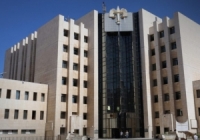 وزارة العدل السورية تدعو إلى تسليم الوثائق المأخوذة من الجهات الأمنية عقب التحرير
وزارة العدل السورية تدعو إلى تسليم الوثائق المأخوذة من الجهات الأمنية عقب التحرير
